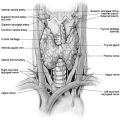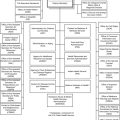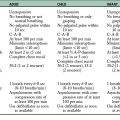4 Crisis resource management in the PACU
Since World War II, the field of aviation has used flight simulators as a safe yet realistic training method for all types of pilots. Investigations of airline disasters have demonstrated that a pilot’s technical skills are not usually the cause of accidents.1 Instead, poor teamwork and inadequate communication were found to be commonly associated with these adverse incidents. In response to this discovery, airline crew team training was born in the 1980s to promote effective collaboration among cockpit and cabin crews, ground personnel, and air traffic controllers. Although the practice has never been validated empirically, simulation techniques have become the mainstay of aviation training. Pilots train extensively in all emergency procedures in simulated environments to become proficient in crisis management before encountering similar situations on actual flights.
Training in health care is now possible with the introduction of full-sized human patient simulators in the early 1990s. Gaba and colleagues, at Stanford University in Palo Alto, California, adapted the principles of CRM training to the medical domain.2 They found that the principles were as applicable to health care as they were to aviation. Both fields are characterized as dynamic, necessitate rapid decision making under stress, and require teams of individuals to work together effectively to prevent loss of life. Critical care medicine, emergency medicine, and trauma teams use simulation technology and CRM training. Although the initial emphasis was to educate physicians, the technique is now used to educate nurse anesthetists, nurse practitioners, critical care nurses, paramedics, and other allied health personnel. Simulation has also been incorporated into many curricula for health care providers and continues to expand its role in education and training to improve health care delivery.
Human factors training and the systems approach to reducing medical error
Human error is an inevitable part of complex and rapidly changing work domains, such as aviation, anesthesiology, and critical care medicine.3 Human error in any discipline can lead to catastrophic outcomes. Major incidents in any industry, such as the crash of the Concorde jet in 2000, gain media interest and prompt public attention and action primarily because of the drama and scope of the event in terms of lives altered or lost. Until recently, human error–related accidents in health care tended to be less visible to the public, primarily because these events usually affect one patient at a time.
Theorists in human factors have identified particular circumstances and error types that can help to train individuals to recognize the signs of errant problem solving. Although human error can never be eradicated, it can certainly be minimized.4 Aviation, for example, favors teaching error management techniques rather than an aiming for human perfection. Numerous organizations are dedicated to improving patient safety by funding research endeavors in this area. One such organization, the Anesthesia Patient Safety Foundation, has funded many studies examining human factors and training in the field of anesthesia. Moreover, the National Patient Safety Foundation has broadened the study of human factors to all medical specialties. Both groups believe that further study and advances in training can improve patient outcomes and safety.
Reason5 operationalized error into the following three terms: slips, lapses, and mistakes. A slip is defined as an error of execution. It is observable and can simply involve the human action of picking up the wrong syringe or turning the wrong knob on an oxygen flowmeter. A lapse is not observable, but involves the inability of a person to correctly recall information from memory, such as the mixture of a lidocaine drip. Finally, a mistake is defined as an error in planning rather than an error in execution. Here, a nurse may have planned to actively suction secretions from an endotracheal tube during extubation of a patient. Although the execution was technically correct, the lungs were left devoid of oxygen in the process, which was a mistake in planning.
A follow-up root cause investigation discovered that the pharmacy had recently stocked phenylephrine next to atropine in the medication drawer. Both the drugs were manufactured by the same company and came in the same sized vials with the same color snap-off caps. The label for atropine was a light red color, but the phenylephrine label was pink. Instead of placing the blame on Sarah, the suggestion was made that pharmacy immediately tag the vials with a black colored A atop the atropine and physically separate the two drugs from one another in the medication cart. The manufacturer was also notified and encouraged to change the labeling system.
Traditionally, an adverse outcome results in blaming the particular caregiver; however, careful study of the entire system in which the incident occurred usually uncovers multiple factors that contributed to the event.2 Lack of training, improper equipment maintenance, poor staffing, or an illegible order transcribed incorrectly can individually or jointly contribute to a critical event. In other words, a cascade of events rather than a single event, often results in an adverse outcome. CRM training advocates the systems approach to adverse outcome analysis. The systems approach seeks answers from a macro perspective to discover the contributing factors. A look at policies and administrative decisions that either supported or derailed a critical incident is a radical departure from the traditional “frame and blame” punitive approach used in medicine. This approach should not be interpreted as lessening the responsibility of the person who made an error, but as gaining a better understanding of why the error occurred; only then can the system be adjusted to better prevent reoccurrence. CRM training strives to make practitioners aware of systemic factors and to work effectively within the context of a large system that might not always support their efforts. The goal of CRM training is to learn from the mistakes of others through an open exchange of information to lessen the contributions of human factors to an adverse event. In this way, students can come to understand the cascade of events that lead to mistakes in a certain situation.
Crisis management principles
Many approaches, philosophies, and theories of crisis management exist for use in managing complex industries such as health care. One such approach is described by the acronym ERR WATCH, developed by Fletcher6 to help the practitioner recall the eight essential elements of crisis management (Box 4-1). ERR WATCH also serves as a reminder that the goal of crisis management is the reduction of the element of human error in any given situation. The human factors shaping performance are of prime importance. Limitations exist in a health care provider’s ability to quickly and accurately process rapidly changing information during a crisis. When these limitations are understood, many opportunities can be found to improve performance.
Environment
The perianesthesia period is a potentially tumultuous time for surgical patients; therefore the typical PACU represents a complex and dynamic work environment for nurses. The acuity and diversity of postsurgical patients, dependence on technology and complex equipment, and inadequate staffing levels contribute to the uncertainty of the environment.
Resources
Resources are assets available to PACU nurses that enable them to do their work. The appropriate use of resources allows for safe and effective care for patients after surgery. Resources are often overlooked in an emergency. A nurse’s knowledge and skills are indispensable resources while caring for patients in the PACU. However, recognition of personal limitations is also a necessary component of delivery of safe care. An honest self appraisal may reveal multiple factors that influence performance and vigilance.7 Lack of sleep, boredom, concerns over personal matters, illness, and the influence of medications can adversely affect performance. Because nurses are human, they are not entirely immune to these influences. Knowledge of these factors and the ability to communicate them to coworkers and supervisors can go a long way to overcome their deleterious effects. A request for a lighter assignment may ultimately be safer than an attempt to overcome fatigue after a sleepless night with a sick child. The expectation that every nurse can perform optimally every day is unrealistic.
Critical care texts, drug formularies, and pharmacology manuals provide essential references for many drugs and dosages that are not used routinely. Institutional protocols and procedure guidelines should be kept on the unit for reference as needed. A review of best evidence is prudent when caring for a patient whose condition is atypical. Advanced cardiac life support (ACLS) algorithm cards, for example, are invaluable in the event of an unstable dysrhythmia or cardiac arrest because recall of these detailed protocols is difficult. Many practitioners carry a personal notebook of medications, precalculated drug dosages, and management protocols for quick access if necessary. Given the volume of knowledge necessary to provide the best nursing care, one cannot stay current in all areas without the use of such cognitive resources. Various applications for smart phones, tablets, and other technological devices are available now for health care workers and provide quickly accessible information.
Reevaluation
The critical aspects of an emergency often cause health care providers to lose sight of the proverbial big picture. Thus, the purpose of reevaluation is twofold: to assess the effectiveness of treatment and to provide more comprehensive insight into the problem. For example, a nurse may become involved in initiating a response to a patient in cardiac arrest yet forget to turn the oxygen to 100% on the ventilator. A continuous scan of all monitors and equipment to evaluate change is ideal in order to provide the best care. The risks and benefits of every intervention must be analyzed. Reevaluation helps to draw the focus outward to see whether parameters that were overlooked initially have changed. With baseline data, a better understanding of the trends in these parameters can be realized. The ability to stand back and absorb the situation in its entirety is referred to as situation awareness in human factors literature.8 Situational awareness allows one to grasp the effects of significant changes and to plan instead of merely react to the situation. It is an integral and requisite component for optimal performance and effective decision making in dynamic and complex environments such as the PACU. With continuous reevaluation of the patient, the PACU nurse can report more effectively to incoming help. The PACU nurse is able to detail what has been done and to prioritize subsequent interventions, which helps new team members contribute positively and effectively.
Attention allocation
Fixation on one idea and pauses in thinking are common for health care providers involved in a critical incident. Fixation errors occur in dynamic situations and are often difficult events from which to recover. For example, a PACU nurse may recognize a decrease in oxygen saturation accompanied by elevated peak airway pressures and, with that information, treat the patient for a bronchospasm. While doing so, the nurse may not be receptive to the hypotension, flushing, and rash that signal an allergic reaction. This failure is an example of a this and only this fixation error in which one has a reasonable diagnosis in mind and manipulates any additional signs and symptoms to fit that diagnosis. A second common fixation error is labeled anything but this, in which treatment is delayed while one seeks additional information in the face of a crisis. The nurse essentially identifies the problem but continues to look for a more manageable diagnosis leading to delayed or improper treatment. The third type of fixation error is called everything’s okay, in which the health care professional denies a problem in evolution. In this case, a PACU nurse might be witnessing a steady decrease in a patient’s oxygen saturation and choose not to respond, telling himself “everything’s okay.” All health care providers are vulnerable to these types of fixation errors during the time constraints of an evolving emergency. These errors are the result of an overtaxed brain that precludes effective performance given the immense workload.
Call for help
Before help arrives, a global scan of the patient, the equipment, and the monitors is a good practice. This requisite knowledge provides a set of baseline data with which to compare as the treatment progresses and allows the nurse to provide a full report to incoming assistants. When help arrives, incoming staff members should receive a succinct report on what has happened and any treatment that has begun. Information in the report need not include insignificant details, but should convey the information necessary to explicate the situation at hand.
Simulation in CRM training
Simulation is the implementation of artificial representations of complex real-world processes with a sufficient level of fidelity to achieve particular goals.9 Simulation imitates real phenomena and processes to capture key characteristics and behaviors of real life events. It is an innovative instructional approach that enhances learning and promotes a sense of empowerment on the part of learners by involving them in the decisions that influence their learning. Through simulation, trainees are challenged in novel ways and take more responsibility in their learning. A critical feature of simulation as a learning tool is that learners have the ability to interact with their surroundings experimentally.9 Using high-fidelity simulated environments, educators and trainers can create models of crisis and chaos where the risk to a real patient is absent.
CRM emphasizes the integration of crisis management principles, including decision making, task management, leadership, communication, situational awareness, and teamwork, in the training of recovery room nurses and team members to manage critical events and crisis situations. Identification and mastering of ideal case management behaviors, including preparation, anticipation, and vigilance, are also a significant goal of CRM training. In addition, factors such as production pressure, problem evolution, and abstract reasoning and their influence on the provider to act efficiently are considered and explored.10
A video-playback, detailed debriefing session, usually facilitated by course faculty, immediately follows the scenario in an adjacent classroom. Debriefing is a discussion among students, guided by faculty, that encourages reflective thought and self review.11 Debriefing is regarded as an integral part of CRM and occurs in a positive, supportive, nonjudgmental, and nonevaluative environment that allows all participants an opportunity to share their experience, offer comments, and discuss concerns.11 The primary goal of debriefing is the discussion of the CRM principles as they relate to the outcome. The discussion is focused on essential crisis management principles such as communication, teamwork, and decision making. Trainees are often surprised at their performances as they view the videotape and are able to scrutinize their interaction with other team members. Most importantly, the group examines CRM strategies that can be used to prevent future errors in similar situations. Most participants complete the course feeling better prepared to navigate the complexity inherent in critical events characteristic of the PACU.
Variety of teaching goals
For effective management of crises in health care, collaboration of multiple team members, including physicians and nurses, is essential. Simulation provides an opportunity for training health care teams to work collectively and maximize their potential. Studies in aviation and medicine have found that lack of nontechnical skills such as teamwork contributed to most disasters. Until the introduction of full-scale human patient simulators, the training of teams was never formalized. Now, actual teams of nurses, respiratory therapists, physicians, and other health care providers can interact realistically and learn to communicate and function together as a cohesive unit. This type of training has been performed at various sites and has been found to be effective at improving team performance.12,13
Summary
Technical knowledge and skills alone are not adequate for functioning in the complex environment of critical care. Patients today are sicker than ever before. With this increased patient acuity also comes an increasing number of critical events that need prompt and accurate management. Each problem has many possible outcomes that depend largely on the actions or inactions of caregivers. Every patient deserves to have well-trained and knowledgeable care providers who can manage the ordinary events associated with recovery from anesthesia as well as the unexpected ones. CRM training and simulation offer a new approach to help PACU nurses meet these challenges successfully. Like the patients for whom they care, health care professionals are human, and humans are imperfect, which is something that cannot be changed. Through advanced training techniques such as CRM and the use of high-fidelity simulation technologies, perianesthesia nurses can be more prepared for life-threatening emergencies, mitigate the number of preventable mishaps, and better contribute to the overall well-being of the patients for whom they provide care.
1. Durso FT, et al. En route operational errors and situation awareness. International Journal of Aviation Psychology. 1998;8(2):177–194.
2. Gaba DM, et al. Theory of dynamic decision-making and crisis management. Crisis management in anesthesiology. In: Gaba DM, et al. Crisis management in anesthesiology. New York: Churchill Livingstone; 1994:5–46.
3. Cooper J, et al. Preventable anesthesia mishaps: a study of human factors. Quality and Safety in Health Care.2002;11(3):277–282.
4. Cook RI, Woods DD. Human error in medicine. Bogner MS, ed. Operating at the sharp end: the complexity of human error. Hillsdale, NJ: Lawrence Erlbaum Associates; 1994.
5. Reason J. Human error: models and management. Br Med J.2000;320(7237):768–770.
6. Fletcher JL. AANA journal course: update for nurse anesthetists; ERR WATCHanesthesia crisis resource management from the nurse anesthetist’s perspective. Journal of the American Association of Nurse Anesthetists.1998;66(6):595–602.
7. Whittingham RB. The blame machine: why human error causes accidents. Burlington, MA: Butterworth-Heinemann; 2004.
8. Endsley MR, Garland DJ. Situation awareness analysis and measurement. Mahwah, NJ: Lawrence Erlbaum Associates, Inc; 2000.
9. Doyle DJ. Simulation in medical education: focus on anesthesiology. available at: www.med-ed-online.org/f0000053.htm, 2011. Accessed May 10
10. Gaba DM, et al. Simulation-based training in anesthesia crisis resource management (ACRM): a decade of experience. Simulation Gaming.2001;32(2):175–193.
11. Savoldelli GL, et al. Value of debriefing during simulated crisis management. Anesthesiology. 2006;105(2):279–285.
12. Cannon-Bowers JA, Salas E. Making decisions under stress. Washington, DC: American Psychological Association; 2006.
13. Weller JM, et al. Evaluation of high fidelity patient simulator assessment of performance of anaesthetists. Br Journal of Anaesth. 2003;90:43–47.





